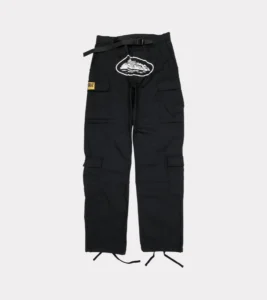Laboratory deep freezers, particularly ultra low temperature (ULT) freezers, are critical for the preservation of biological samples, reagents, and other temperature-sensitive materials. As laboratories aim to reduce their environmental footprint and operational costs, energy-saving features in these freezers have become a focal point of innovation. This article explores the various energy-efficient technologies integrated into modern ULT freezers, their impact on operational costs, and their broader environmental implications.
Introduction to Energy Efficiency in ULT Freezers
Ultra low temperature freezers typically operate at temperatures ranging from -80°C to -86°C, which requires significant energy. Historically, these freezers have been known for their high energy consumption. However, advancements in technology have introduced energy-saving features that significantly reduce their power usage without compromising performance.
Energy-Saving Technologies in Modern ULT Freezers
1. Variable Speed Compressors
One of the most impactful innovations is the introduction of variable speed compressors. Unlike traditional compressors that operate at full speed until the desired temperature is reached and then shut off, variable speed compressors adjust their speed based on cooling demands. This modulation ensures that the compressor works more efficiently, using less energy while maintaining consistent temperatures.
2. Improved Insulation Materials
Advancements in insulation materials have also contributed to energy savings. Modern ULT freezers use high-performance vacuum insulation panels (VIPs) that offer superior thermal resistance compared to traditional polyurethane foam. VIPs reduce heat transfer, allowing freezers to maintain ultra low temperatures with less energy consumption.
3. Advanced Control Systems
Sophisticated control systems with real-time monitoring and adaptive algorithms optimize the freezer’s operation. These systems adjust cooling cycles based on usage patterns and ambient conditions, ensuring the freezer operates efficiently. Features such as predictive maintenance alerts and remote monitoring also contribute to maintaining optimal performance and preventing energy waste.
4. Eco-Friendly Refrigerants
Many modern ULT freezers now use eco-friendly refrigerants with low global warming potential (GWP). These refrigerants not only reduce the environmental impact but also improve the energy efficiency of the cooling system. For instance, refrigerants like R-170 (ethane) and R-290 (propane) are gaining popularity due to their low GWP and high efficiency.
5. High-Efficiency Fans and Motors
Energy-efficient fans and motors play a crucial role in reducing power consumption. By using brushless DC motors and high-efficiency fan blades, modern ULT freezers can circulate air more effectively, reducing the workload on the compressor and enhancing overall energy efficiency.
Implications for Operational Costs
1. Reduced Energy Bills
The most direct benefit of these energy-saving features is the reduction in energy bills. Laboratories with multiple ULT freezers can see substantial savings. For example, a freezer that uses 30% less energy can save hundreds of dollars annually per unit. When scaled across several units, the cost savings become significant.
2. Extended Equipment Lifespan
Energy-efficient technologies often lead to less wear and tear on components. Variable speed compressors, for instance, experience fewer start-stop cycles, which reduces mechanical stress and extends the lifespan of the freezer. This longevity translates to lower replacement costs and reduced maintenance expenses over time.
3. Incentives and Rebates
Many regions offer incentives and rebates for energy-efficient laboratory equipment. By investing in modern ULT freezers with certified energy-saving features, laboratories can take advantage of these financial incentives, further offsetting the initial purchase cost.
Environmental Impact
1. Reduced Carbon Footprint
Energy consumption in laboratories contributes to greenhouse gas emissions, primarily when the energy is sourced from fossil fuels. By reducing the energy usage of ULT freezers, laboratories can significantly lower their carbon footprint. For example, if a single ULT freezer reduces its energy consumption by 2,000 kWh per year, it can prevent approximately 1.4 metric tons of CO2 emissions, assuming an emission factor of 0.7 kg CO2 per kWh.
2. Sustainable Laboratory Practices
Adopting energy-efficient ULT freezers is part of a broader commitment to sustainable laboratory practices. This includes reducing waste, optimizing resource use, and minimizing environmental impact. Laboratories that prioritize sustainability can contribute to global efforts to combat climate change and promote environmental stewardship.
3. Compliance with Environmental Regulations
Increasingly, environmental regulations require organizations to reduce their energy consumption and carbon emissions. By investing in energy-efficient ULT freezers, laboratories can ensure compliance with current and future regulations, avoiding potential fines and reputational damage.
Case Studies and Real-World Applications
Several laboratories and research institutions have successfully implemented energy-saving ULT freezers and reported positive outcomes.
Case Study 1: University Research Lab
A prominent university research lab replaced its aging fleet of ULT freezers with modern units featuring variable speed compressors and advanced insulation. The lab reported a 40% reduction in energy consumption, saving approximately $20,000 annually in energy costs. Additionally, the new freezers’ lower heat output improved the lab’s overall HVAC efficiency, leading to further energy savings.
Case Study 2: Pharmaceutical Company
A pharmaceutical company invested in ULT freezers with eco-friendly refrigerants and smart monitoring systems. The company not only reduced its energy bills but also received a significant rebate from a local energy efficiency program. The investment paid for itself within three years, and the company enhanced its sustainability credentials, which resonated well with stakeholders and clients.
Future Trends in ULT Freezer Technology
As technology continues to advance, we can expect further improvements in the energy efficiency of ULT freezers. Some potential future trends include:
1. Integration with Renewable Energy Sources
Future ULT freezers may be designed to integrate seamlessly with renewable energy sources, such as solar panels. This integration could provide a more sustainable power supply, reducing reliance on grid electricity and further decreasing the carbon footprint of laboratory deep freezer.
2. Enhanced IoT Connectivity
The Internet of Things (IoT) will play a more significant role in the future of ULT freezers. Enhanced IoT connectivity will allow for more precise control and monitoring, optimizing energy use and providing valuable data for improving efficiency and maintenance.
3. Automated Demand Response
Automated demand response systems can adjust the operation of ULT freezers based on real-time energy pricing and demand. During peak energy usage times, the system can reduce the freezer’s power consumption, helping to balance the grid and lower energy costs.
Conclusion
Energy-saving features in modern ultra low temp freezer offer substantial benefits for both operational costs and environmental impact. By incorporating variable speed compressors, advanced insulation materials, sophisticated control systems, eco-friendly refrigerants, and high-efficiency fans and motors, these freezers reduce energy consumption, lower operational costs, and contribute to sustainability goals. As laboratories continue to prioritize energy efficiency, the adoption of these advanced ULT freezers will play a crucial role in fostering sustainable scientific research and environmental stewardship.








